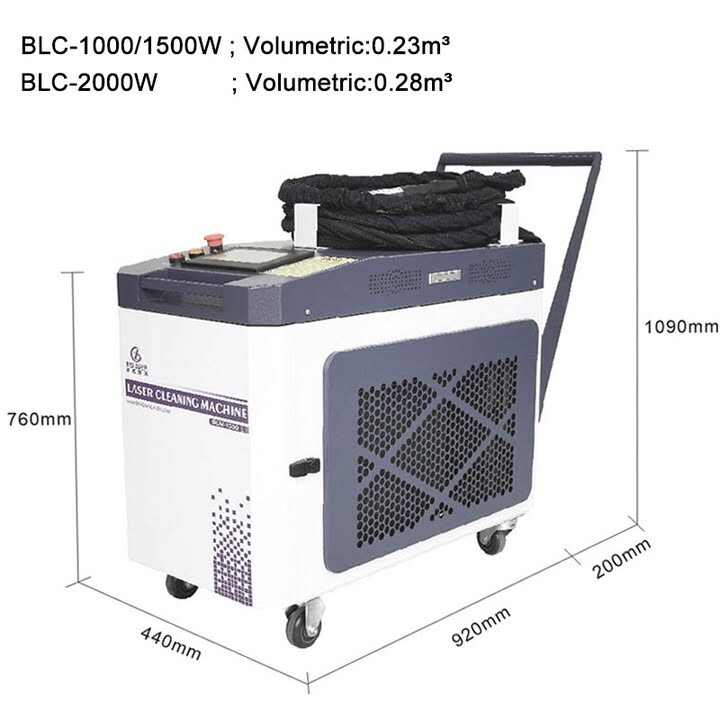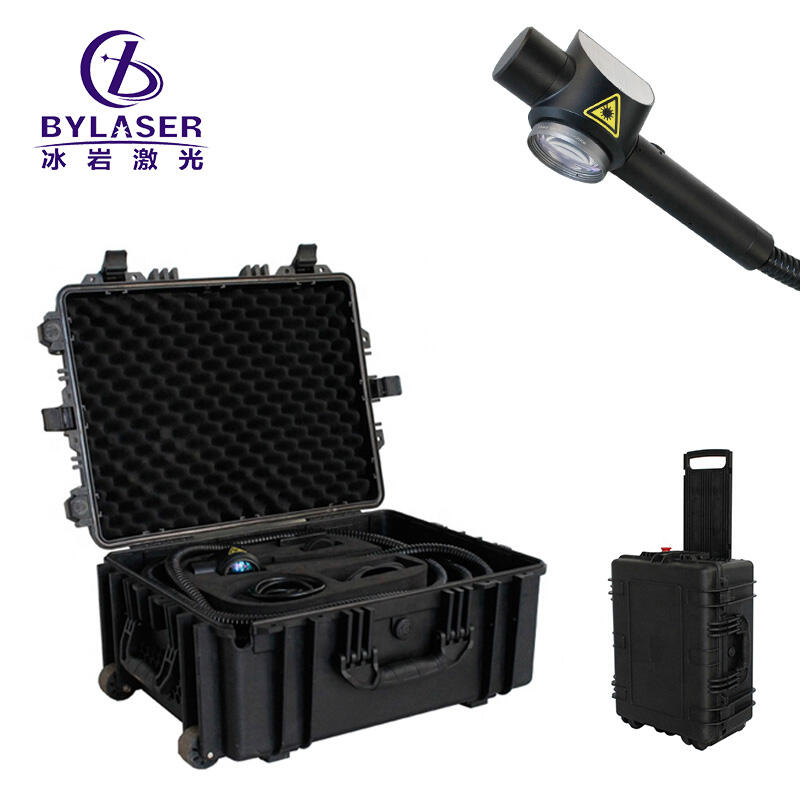The emergence of laser cleaner machines has fundamentally transformed the landscape of industrial maintenance operations. These sophisticated devices harness the power of concentrated light energy to remove contaminants, rust, and unwanted materials from surfaces with unprecedented precision and efficiency. As industries evolve and demand higher standards of cleanliness and maintenance, laser cleaner machines have become indispensable tools in modern maintenance protocols.
Traditional cleaning methods often involve abrasive materials, chemicals, or mechanical processes that can be time-consuming and potentially damaging to the underlying surfaces. In contrast, laser cleaner machines offer a non-contact, environmentally friendly solution that delivers superior results while minimizing waste and reducing operational costs. This revolutionary technology has found applications across diverse sectors, from automotive manufacturing to historical preservation.
The laser cleaner machine excels in delivering precise and controlled cleaning results. Unlike conventional methods, laser cleaning allows operators to target specific areas with exceptional accuracy, adjusting the intensity and focus of the laser beam to match the cleaning requirements. This level of control ensures that sensitive materials remain unharmed while stubborn contaminants are effectively removed.
Advanced laser cleaning systems come equipped with programmable settings that enable operators to customize the cleaning parameters for different materials and contamination levels. This versatility makes the laser cleaner machine an ideal solution for complex maintenance tasks that require varying degrees of cleaning intensity across different surface areas.
One of the most compelling benefits of laser cleaning technology is its environmental sustainability. The laser cleaner machine operates without chemicals or abrasives, producing minimal waste and eliminating the need for disposal of cleaning agents. This eco-friendly approach not only reduces the environmental impact but also creates safer working conditions for maintenance personnel.
The non-contact nature of laser cleaning significantly reduces the risk of operator injury and eliminates exposure to harmful chemicals. Furthermore, the process generates minimal heat, preventing thermal damage to sensitive components and allowing for immediate handling of cleaned items.
Implementing a laser cleaner machine in maintenance operations can lead to substantial time savings. The technology's rapid cleaning action and precise targeting capabilities mean that tasks that previously took hours can now be completed in minutes. This increased efficiency translates directly into reduced labor costs and improved productivity.
The initial investment in laser cleaning equipment is offset by long-term cost savings in several areas. These include reduced consumption of consumables, lower waste disposal costs, and decreased downtime for maintenance activities. Additionally, the durability of laser cleaning systems ensures a reliable and consistent cleaning performance over extended periods.
The reproducibility and consistency of laser cleaning results contribute significantly to quality control in maintenance operations. Each cleaning cycle delivers uniform results, eliminating the variability often associated with manual cleaning methods. This consistency is particularly valuable in industries where precise cleanliness standards must be maintained.
Modern laser cleaner machines often incorporate advanced monitoring and documentation features, allowing maintenance teams to track cleaning parameters and results. This data-driven approach enables continuous process optimization and helps maintain compliance with quality standards.
The adaptability of laser cleaner machines makes them suitable for a wide range of industrial applications. In automotive manufacturing, they excel at preparing surfaces for painting and removing rust or coatings. In electronics manufacturing, laser cleaning can precisely remove contaminants from delicate components without causing damage.
Heritage conservation projects benefit from the gentle yet effective cleaning action of laser systems, which can remove centuries of accumulated dirt and grime without harming historical artifacts. The technology has also found applications in aerospace maintenance, where precision cleaning of critical components is essential for safety and performance.
Successfully implementing laser cleaning technology requires careful consideration of integration requirements and operator training. Modern laser cleaner machines are designed with user-friendly interfaces, but proper training ensures optimal utilization of the technology's capabilities. Manufacturers typically provide comprehensive training programs and ongoing support to help maintenance teams master the equipment.
The integration process often involves analyzing existing maintenance workflows and identifying opportunities for optimization through laser cleaning. This may include developing new standard operating procedures and establishing maintenance schedules that maximize the benefits of the technology.

The field of laser cleaning technology continues to evolve, with new developments expanding the capabilities of laser cleaner machines. Artificial intelligence and machine learning integration are enabling smarter, more automated cleaning processes. These advanced systems can automatically adjust cleaning parameters based on surface conditions and contamination levels.
Manufacturers are also developing more compact and portable laser cleaning solutions, making the technology accessible to a broader range of applications. These innovations are accompanied by improvements in energy efficiency and operational speed, further enhancing the technology's value proposition.
As manufacturing facilities embrace Industry 4.0 principles, laser cleaner machines are being integrated into connected maintenance systems. This integration enables real-time monitoring of cleaning operations, predictive maintenance scheduling, and automated documentation of maintenance activities. The result is a more efficient and data-driven approach to industrial cleaning and maintenance.
The connectivity features of modern laser cleaning systems also facilitate remote monitoring and support, allowing manufacturers to provide timely assistance and optimize system performance without on-site visits. This capability has become particularly valuable in maintaining operational continuity during challenging circumstances.
Laser cleaner machines are versatile and can effectively clean a wide range of materials including metals, plastics, rubber, stone, and composite materials. The technology can be adjusted to safely clean delicate surfaces without causing damage, making it suitable for both industrial applications and precision cleaning tasks.
Laser cleaning offers several advantages over traditional methods, including higher precision, no chemical usage, minimal waste generation, and reduced operational costs in the long term. The non-contact nature of laser cleaning also eliminates wear and tear on surfaces that can occur with abrasive cleaning methods.
Laser cleaner machines typically require minimal maintenance compared to conventional cleaning equipment. Regular maintenance tasks include cleaning the optical components, checking alignment, and ensuring proper functioning of safety systems. Most systems are designed for long operational life with proper care and maintenance protocols.
